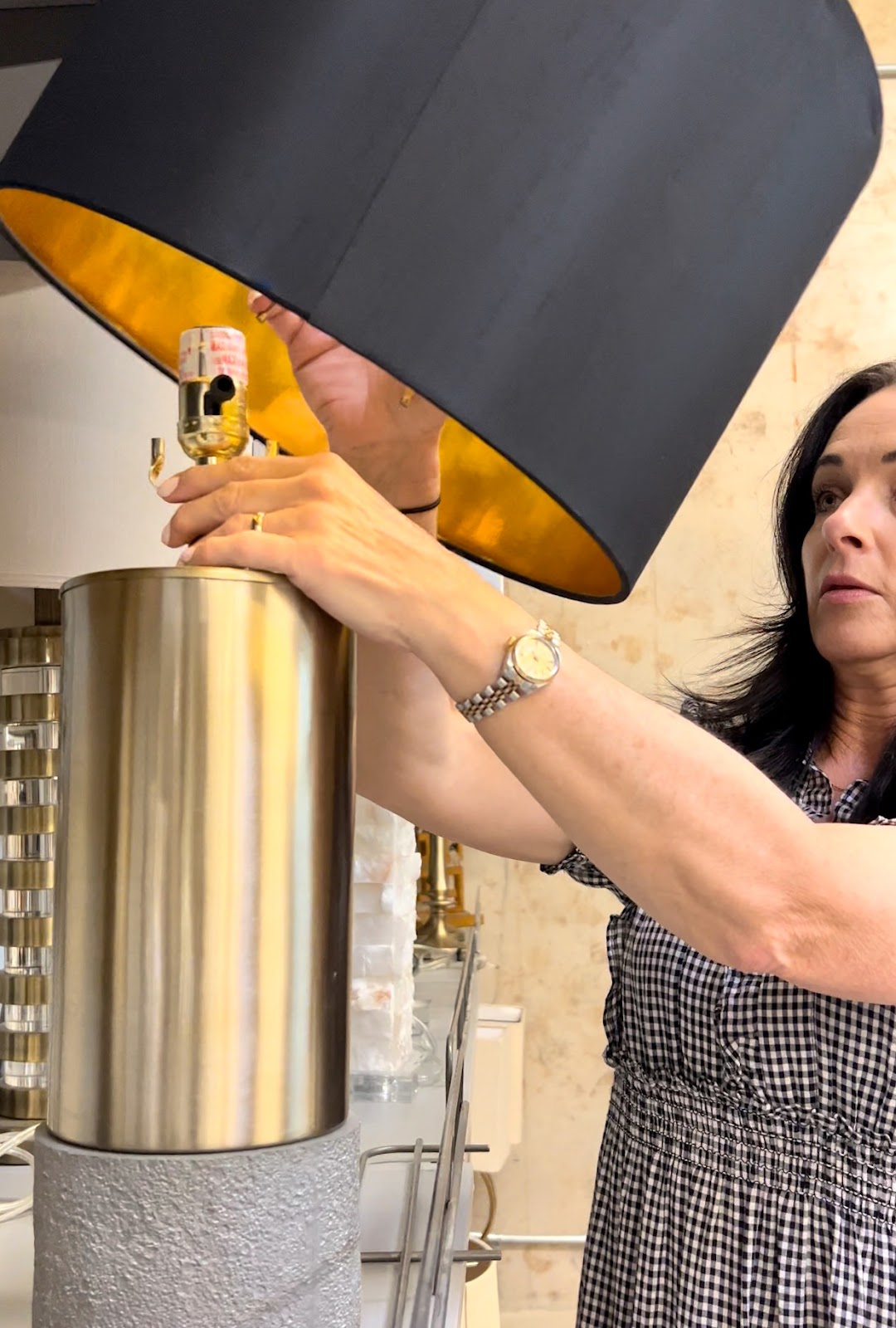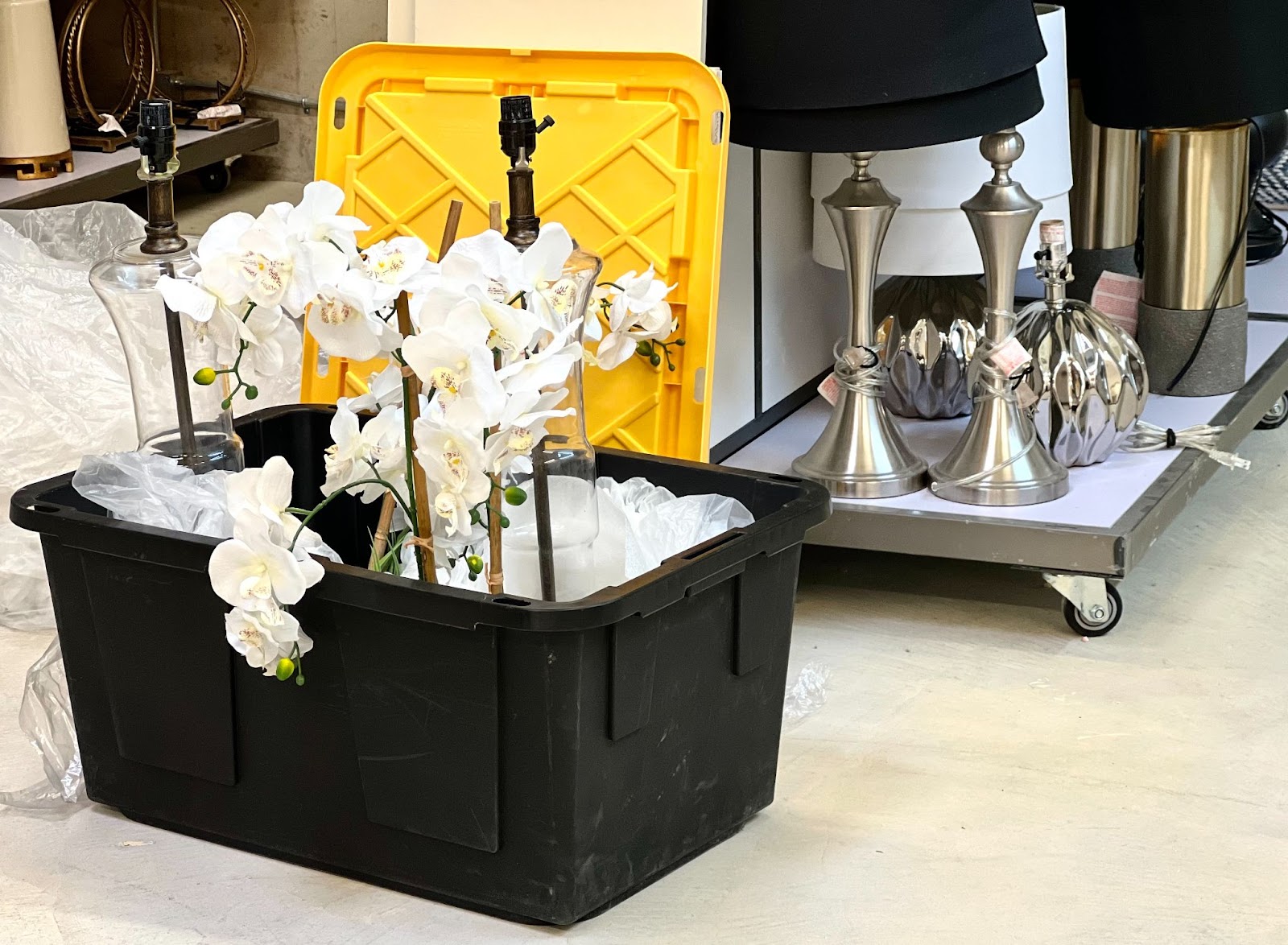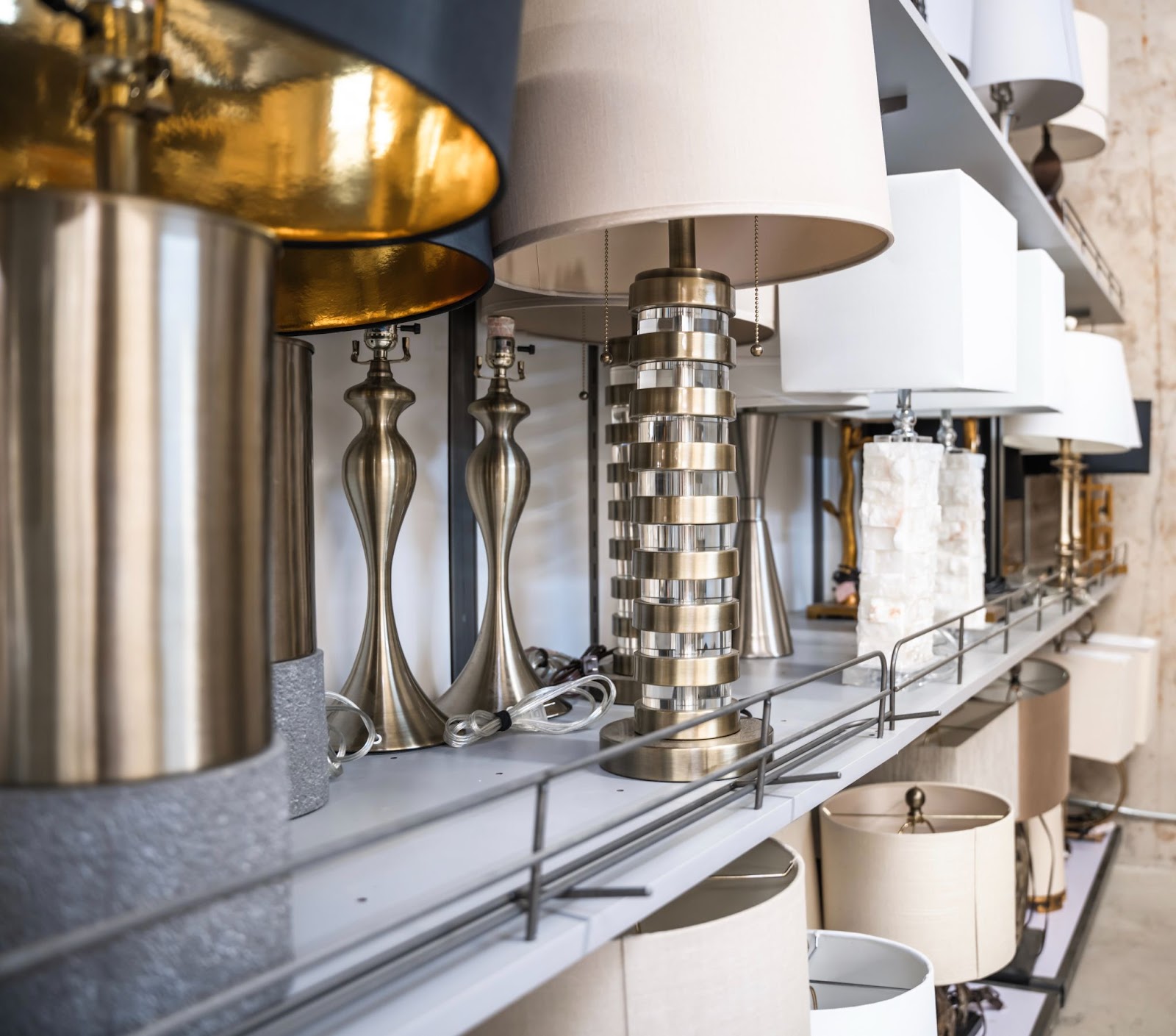How to Pack, Transport, and Store Lamps for Home Staging
May 10, 2022Not sure how to pack, transport, or store lamps? We’ve been getting so many questions about this, so here is a complete guide on packing, transporting, and storing lamps, lampshades and more.
Lamps and lampshades are our least favorite thing to transport because there are so many delicate parts and they are not meant to be moved around over and over again. We’ve tried everything and have discovered what works and what doesn’t work for our staging business. Watch the video, read this blog post now, or bookmark it for later!
Supplies Needed to Pack Lamps & Lampshades For a Stage:
- Utility Storage Container
- Packing Paper, Foam, or Fillers
- Hair Elastics
- Painter’s Tape
How to Pack a Lamp for Staging

Step #1: Disassemble Lamp & Keep Everything Together
- Remove the lampshade from the base, keeping the harp and finial attached.
- Remove lightbulb (pack them in the same bin and nest them in packing materials).
- If there is any loose hardware, store them in a plastic bag and tape them to the bin or to the base of the lamp to avoid any parts getting misplaced.

Step #2: Fold & Tie Lamp Cord
- Fold and tie the lamp cord with an elastic hairband.
This step is very important because the lamp cord can get caught on things, or become a tripping hazard during the home staging process. They’re also more durable and don’t break as easily as rubber bands do.
Pro Tip: Keep the hair elastic on the end of the cord, so it’s ready when you de-stage the home.

Step #3: Protect Lamp
- Use the packing material to line the bottom of the bin.
- Create a nest around the lamp, cord, and base with packing paper/foam/fillers.
This will help protect the lamp from getting bent, scratched, or damaged. When the lamp bases are too tall to lay down in the storage container, we keep them uncovered. We always try to utilize the space in the bins and will add items that are of the same height along with more packing material.
Step #4: Use a Separate Bin for Lampshades
- Pack the lampshade in a separate container (you can nest smaller shades inside larger shades to save space).
- Fill the bin with more packing material just to keep the lampshade from rolling around. Don’t over-stuff it!
Storing Lamps in a Warehouse

When it comes to storing lamps in our staging warehouse, we’ve tried everything from storing the lampshades separately to keeping them in their original packaging, but that just didn’t work for us. We ended up with a mix-up of lamp bases, shades, and missing parts.
We store our lamps on shelving units in pairs and keep the cords tied with elastics for easy storage. When the lampshades are stackable, we’ll stack them on the back lamp base and place the bare one in front so that the design is visible. For lampshades that are not stackable, we keep the lampshades on the lamps and put them side by side.
NOTE: Be careful to not push the lampshades down too much when you stack them. You can easily cause a crease.
We also number all our lamp bases and corresponding lampshades the same number in case they are separated.
When a stage is getting pulled, the stager knows which shade and base will fit together. Or when there is a destage, if the shade and base get separated, you’ll know which shade goes with which base. You’ll just want to be sure that the lampshade finds the base when you are unloading the bins.
There may be instances where you are working with a large collection of the exact same lamp. There is no need for each to have its own number if one shade could go on any of the bases. Just give them all the same number to keep things simple.

Pro tip: The key to keeping the lampshade and lamp together is to never take the harp off. If you take the harp off, and don’t put the right shade and harp together, it will mess up the shade to base ratio (this ratio is what makes the lamp pretty and more info like this can be found in our training for home stagers).
Staging Studio was created by stagers, for stagers. Learn more about our state-of-the-art, RESA-accredited Staging Design Professional® training courses.
Don't miss our next blog like this!
Join to receive the latest news for home stagers.



